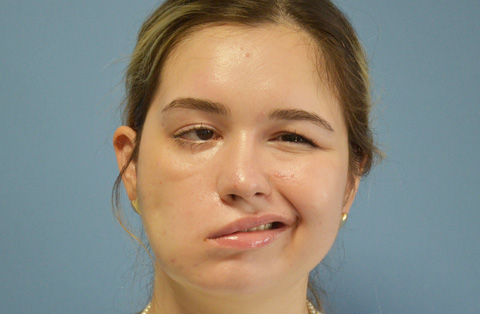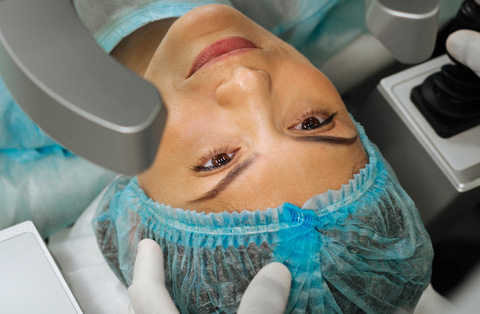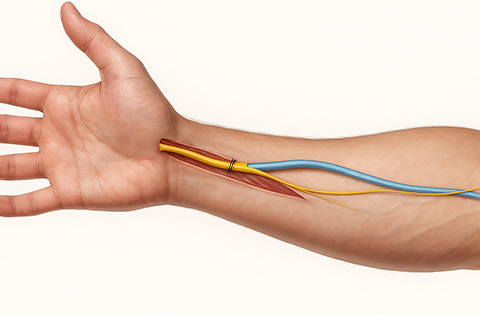Bell’s palsy during pregnancy causes sudden facial paralysis, but early treatment improves recovery. Learn the causes, symptoms, and safe treatments to protect your health and regain facial function.
What is Bell's Palsy?
Bell's palsy is a sudden weakness or paralysis of the muscles on one side of the face. It occurs when the facial nerve (cranial nerve VII) becomes inflamed or compressed.
This condition causes facial drooping, difficulty closing the eye, and changes in facial expressions. It can develop quickly, often within hours or days. Most cases improve within a few weeks to months, but some may experience lasting effects. The exact cause is unknown, but viral infections, immune responses, and inflammation are possible triggers.
How Does Bell's Palsy Affect Pregnant Women?
Bell's palsy is more common in pregnant women, especially in the third trimester or shortly after delivery. The exact reason is unclear, but hormonal changes, fluid retention, and increased blood pressure may contribute. Pregnant women with Bell’s palsy may experience more severe symptoms and a slower recovery compared to non-pregnant individuals. Early treatment can help improve outcomes.
Bell's Palsy Symptoms
Bell's palsy symptoms appear suddenly and affect one side of the face. They range from mild to severe. Common symptoms include:
Facial weakness or paralysis
Drooping of the mouth or eyelid
Difficulty closing the eye on the affected side
Loss of taste on the front two-thirds of the tongue
Increased sensitivity to sound in one ear
Dry eye or excessive tearing
Drooling
Difficulty speaking or eating
Symptoms usually peak within 48 hours. Most cases improve over time, but some may have lasting effects.
What Causes Bell's Palsy in Pregnancy?
The exact cause of Bell’s palsy in pregnancy is unclear, but several factors may contribute:
Viral infections: Reactivation of viruses like herpes simplex can inflame the facial nerve.
Hormonal changes: Increased estrogen and progesterone levels may affect nerve function.
Fluid retention: Swelling during pregnancy can compress the facial nerve.
High blood pressure (preeclampsia): Increased blood pressure may reduce blood flow to the nerve.
Immune system changes: Pregnancy alters immune responses, making nerves more vulnerable to inflammation.
These factors may increase the risk, especially in the third trimester or postpartum period.
The Incidence of Bell's Palsy During Pregnancy
Bell’s palsy is more common during pregnancy than in the general population. The estimated incidence in pregnant women is about 45 per 100,000 pregnancies, which is three times higher than in non-pregnant women.
It most often occurs in the third trimester or within the first week after delivery. The increased risk may be linked to hormonal changes, fluid retention, and immune system shifts. While the condition is rare, pregnant women with high blood pressure or preeclampsia may have a higher chance of developing Bell’s palsy.
How Pregnancy Increases the Risk of Facial Nerve Palsy?
Pregnancy increases the risk of Bell’s palsy due to physiological changes that affect the facial nerve. Key factors include:
Hormonal fluctuations: High estrogen and progesterone levels may cause nerve swelling and reduced blood circulation.
Fluid retention: Increased water retention can lead to compression of the facial nerve within the skull.
Immune system changes: Pregnancy alters immune responses, making nerves more susceptible to inflammation or viral reactivation.
High blood pressure: Conditions like preeclampsia can restrict blood flow to the nerve, increasing the risk of damage.
These factors make Bell’s palsy more likely in the third trimester or postpartum period.
The Risk of Bell's Palsy in Early Puerperium
The risk of Bell’s palsy remains high in the early puerperium (the first six weeks after childbirth). This period involves rapid physiological changes that may trigger facial nerve inflammation. Key risk factors include:
Hormonal shifts: A sudden drop in estrogen and progesterone may affect nerve function.
Fluid balance changes: Rapid loss of retained fluids can alter nerve pressure.
Postpartum immune response: The immune system readjusts, potentially increasing inflammation.
Blood pressure fluctuations: Women with preeclampsia or hypertension remain at higher risk.
Although Bell’s palsy is less common postpartum than in late pregnancy, early recognition and treatment improve recovery outcomes.
How Is Bell's Palsy Diagnosed in Pregnant Women?
Bell’s palsy is diagnosed based on clinical symptoms and a physical examination. No specific test confirms the condition, but doctors rule out other possible causes of facial paralysis. The diagnostic process includes:
Medical history: Evaluating symptom onset, pregnancy stage, and risk factors like high blood pressure.
Neurological exam: Checking facial muscle strength, eye closure ability, and taste sensation.
Exclusion of other conditions: Stroke, preeclampsia, Guillain-Barré syndrome, and ear infections must be ruled out.
Imaging tests (if needed): MRI or CT scans may be used if symptoms are unusual or recovery is delayed.
Early diagnosis helps guide treatment and improve outcomes for pregnant women.
Ruling Out Other Causes of Facial Paralysis
Facial paralysis can result from various conditions, so ruling out other causes is essential for an accurate diagnosis. Doctors differentiate Bell’s palsy from other serious conditions using medical history, physical exams, and sometimes imaging or lab tests. Key conditions to rule out include:
Stroke: Unlike Bell’s palsy, a stroke usually affects more than just the face and may involve arm or leg weakness. Speech difficulties and dizziness are common stroke signs.
Preeclampsia or Eclampsia: High blood pressure in pregnancy can cause neurological symptoms, including facial weakness. Blood pressure monitoring and urine tests for protein help diagnose these conditions.
Guillain-Barré Syndrome: This rare immune disorder causes progressive muscle weakness, often affecting both sides of the face. A lumbar puncture or nerve conduction studies may be needed.
Ear infections or tumors: Infections like otitis media can inflame the facial nerve, while tumors may press on it. Imaging tests such as MRI or CT scans help rule out these causes.
Lyme disease: In endemic areas, Lyme disease can cause facial paralysis. A blood test may be done if a tick bite or rash is reported.
Careful evaluation ensures appropriate treatment and prevents misdiagnosis.
What Treatment Options Are Available for Bell's Palsy in Pregnancy?
Treatment for Bell’s palsy in pregnancy focuses on symptom relief and recovery while ensuring fetal safety. Options include:
Corticosteroids: Prednisone may reduce nerve inflammation and improve recovery. It is generally considered safe in pregnancy, especially after the first trimester.
Antiviral medications: If a viral infection is suspected, antiviral drugs like acyclovir may be used, though their benefit is uncertain.
Eye protection: Artificial tears, lubricating ointments, and eye patches prevent dryness and damage if eyelid closure is impaired.
Physical therapy: Gentle facial exercises may help maintain muscle tone and improve function.
Pain management: Acetaminophen is usually recommended for pain relief, as NSAIDs are not advised in later pregnancy.
Supportive care: Adequate rest, hydration, and a balanced diet support overall recovery.
Most cases resolve within weeks to months. Early treatment improves outcomes and reduces complications.
The Role of Corticosteroids in Treating Bell's Palsy
Corticosteroids, such as prednisone, are the primary treatment for Bell’s palsy because they reduce nerve inflammation and swelling. They are most effective when started within 72 hours of symptom onset.
How Corticosteroids Help
Decrease facial nerve swelling
Prevent further nerve damage
Improve chances of full recovery
Use in Pregnancy
Generally considered safe, especially after the first trimester
The benefits of reducing nerve damage often outweigh potential risks
Dosage and duration are carefully adjusted to minimize fetal exposure
Effectiveness
Studies show that corticosteroids improve recovery rates, with most patients regaining full facial function within weeks to months. Early treatment leads to better outcomes.
What Is the Prognosis for Bell's Palsy in Pregnancy?
The prognosis for Bell’s palsy in pregnancy is generally good, but recovery may take longer compared to non-pregnant individuals. Most women regain full facial function within three to six months, though some may experience residual weakness.
Factors Affecting Recovery
Early treatment: Starting corticosteroids within 72 hours improves outcomes.
Severity of symptoms: Complete paralysis may take longer to heal than mild weakness.
Gestational timing: Cases occurring in the third trimester or postpartum may have a slower recovery.
Pre-existing conditions: High blood pressure or diabetes may delay healing.
Long-term Effects
Most cases resolve completely, but a small percentage may experience residual facial weakness, muscle tightness, or involuntary movements. Regular follow-ups help track progress and manage lingering symptoms.
Can Bell's Palsy in Pregnancy Be Prevented?
There is no guaranteed way to prevent Bell’s palsy in pregnancy, but reducing risk factors may help. Strategies include:
Managing blood pressure: Controlling hypertension and preventing preeclampsia lowers nerve damage risk.
Preventing viral infections: Practicing good hygiene and avoiding known triggers, such as herpes simplex virus, may reduce the chance of viral reactivation.
Maintaining a healthy lifestyle: Proper nutrition, hydration, and regular prenatal care support nerve health.
Reducing fluid retention: Staying active and limiting excessive salt intake may help prevent nerve compression.
Managing stress: High stress can weaken the immune system, increasing susceptibility to inflammation.
While Bell’s palsy cannot always be avoided, early recognition and treatment improve recovery outcomes.
Is Bell's Palsy Dangerous During Pregnancy?
Bell’s palsy itself is not life-threatening for the mother or baby, but it can cause discomfort and temporary facial dysfunction. The main concerns during pregnancy include:
Potential Risks
Delayed recovery: Pregnant women may take longer to regain full facial function.
Eye complications: Inability to close the eye properly can lead to dryness, infection, or corneal damage.
Emotional distress: Sudden facial paralysis may cause anxiety or affect self-esteem.
Underlying conditions: High blood pressure or preeclampsia, which are more common in pregnant women with Bell’s palsy, require careful monitoring.
When to Seek Medical Attention
Immediate medical evaluation is needed if facial weakness occurs, as other serious conditions, like stroke or preeclampsia, must be ruled out. Prompt treatment improves recovery chances and minimizes complications.






